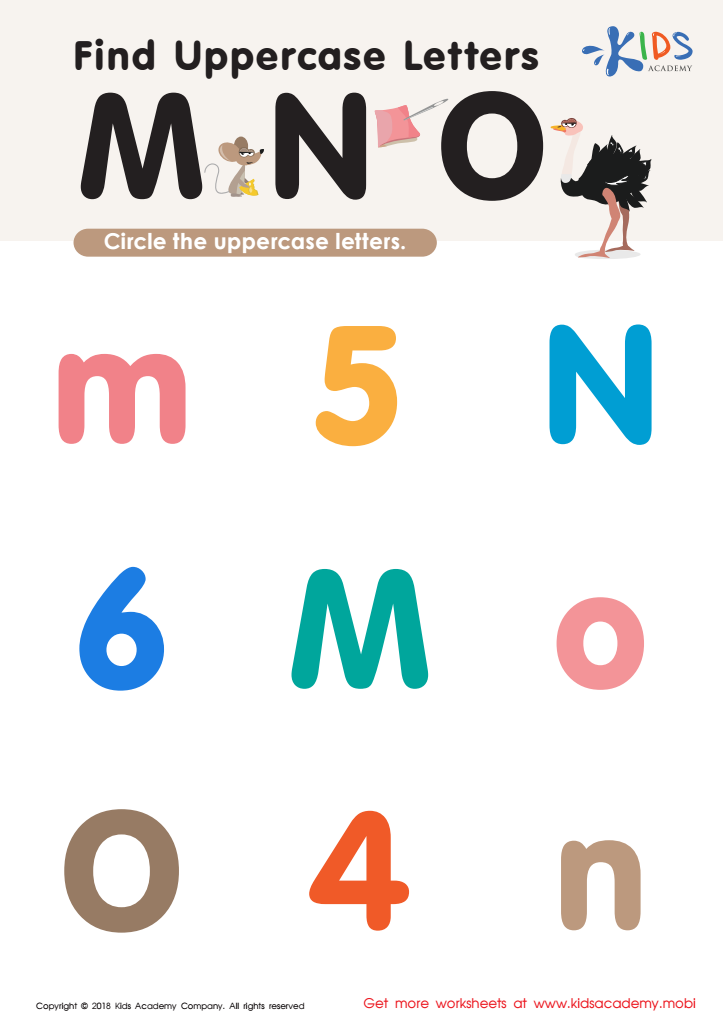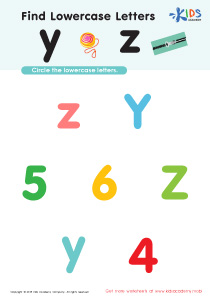Uppercase identification Normal Uppercase Letters Worksheets for 6-Year-Olds
5 filtered results
-
From - To
Welcome to our Uppercase Identification Worksheets designed specifically for 6-year-olds! These engaging worksheets help young learners recognize and distinguish normal uppercase letters, boosting their reading and writing skills. Our fun and interactive activities include tracing, matching, and coloring tasks that reinforce letter recognition in an enjoyable way. Ideal for preschool and kindergarten classrooms, these printable resources provide a solid foundation for early literacy. With bright illustrations and age-appropriate exercises, children will stay motivated while mastering uppercase letters. Explore our collection today and watch your child gain confidence in their alphabet knowledge as they embark on their learning journey!


Find Uppercase Letters Worksheet


Find Uppercase Letters J, K, and L Worksheet


Find Uppercase Letters A, B, and C Worksheet


Find Uppercase Letters V, W, X Worksheet


Find Uppercase Letters M, N, and O Worksheet
Understanding and identifying uppercase letters is foundational for 6-year-olds as they begin to develop literacy skills. Recognizing uppercase letters is crucial for early reading and writing, as these letters are often used to start sentences and signify important proper nouns. Parents and teachers should care because this skill helps children decode and comprehend written material, paving the way for more complex literacy concepts.
Uppercase letters also play a significant role in children's self-expression. Mastering these letters allows kids to properly write their names and titles, bolstering their confidence in using written communication. Additionally, the early stages of reading and writing require familiarity with the mechanics of language, which includes understanding letter formation and spacing.
By focusing on uppercase letter identification, parents and teachers can support cognitive development, enhance fine motor skills through writing activities, and foster a love for reading. Early interventions, such as engaging activities and games that emphasize letter recognition, can make learning enjoyable and effective. Ultimately, encouraging proficiency in uppercase letters sets the stage for children's overall literacy journey, equipping them with the tools they need for lifelong learning.
 Assign to My Students
Assign to My Students






















